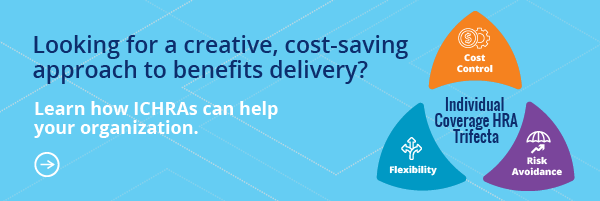What do rats, monkeys, pigeons and people all have in common?

We all like choice. According to psychologists, choice makes us feel in control and powerful. It even helps us survive.
Some choices are not really that important: for example, are you wearing blue pants or black pants today? Probably doesn’t make much of a difference.
However, when it comes to benefits, the choices people make can have a significant impact. This isn’t a pigeon pecking a button for a couple of seeds, there are real financial ramifications to benefits decision-making.
When people are offered benefits through their employer, they generally have a handful of medical choices There might be a PPO and an HDHP offered through a single carrier. Or there might be a single plan design offered through multiple carriers. Or, there could just be a choice among HDHPs with a different carrier for an HMO. Many combinations exist. Regardless, each employer typically limits the options available to best balance the needs of a diverse workforce with requirements to communicate and administer benefits.
As benefits consumers, employees are accustomed to picking the best fit from a small set of options. If they need more or different protection, they are able to get closer to meeting their specific needs by electing certain voluntary coverage when available, or funding a healthcare account.
What’s missing currently is the ability for true personalization, something that research by MetLife found employees are increasingly interested in:
- 93% of employees say the ability to customize their benefits is a must-have or nice-to-have
- 72% feel that having benefits customized to their needs would increase loyalty to their employer
- 67% of employees are satisfied with their benefits. (This is not directly correlated to customization but considering how much employers spend on benefits, this result isn’t necessarily something to celebrate. Plus, it was 4% less than in the prior year.)
The challenge for employers is how to continue to provide a valuable, attractive benefits program while enabling employees to create the bespoke coverage they want.
The answer is the new Individual Coverage HRAs (ICHRAs) that enable an employer to create and fund accounts for employees to purchase their own healthcare coverage.
Instead of choosing from just a few employer-curated options, employees with access to an ICHRA can pick from any available individual coverage options to find a plan design and network that works best for them. They can make personalized decisions about the importance of the breadth of network providers, and choose a design based upon their preference of paying more in premium and less at the doctor or the other way around.
The Kaiser Family Foundation found that in 2019, the average cost for employer-sponsored coverage was $7,188 for employee-only and $20,576 for a family. Of this, employees contribute an average of $1,242 and $6,015, respectively. So, employees are already spending their own dollars for coverage that may or may not be what they would choose given access to more or different options.
However, offering employees this level of choice requires support. In general, people aren’t very savvy about their benefits. A third of employees report they are outright confused. In this context, giving employees an account and sending them forth to choose healthcare coverage with no help will probably be a disaster, no matter how much customization potential an ICHRA affords them.
The key to providing employees with multiple channels to choose from is to offer meaningful decision guidance and a benefits system that is fully integrated and easy to use. Ideally, the system is integrated with the rest of your benefits for a seamless experience.
While employees are used to having just a few healthcare options from their employer, they are clamoring for more choice and the ability to create truly customized benefits. ICHRAs offer a new, exciting way for employers to rethink benefits design and delivery that creates the opportunity for their workforce to enjoy real personalization.
And this just might make employees love their benefits even more.
ICHRAs offer real advantages for employers, too. Learn about the top three in our infographic.



